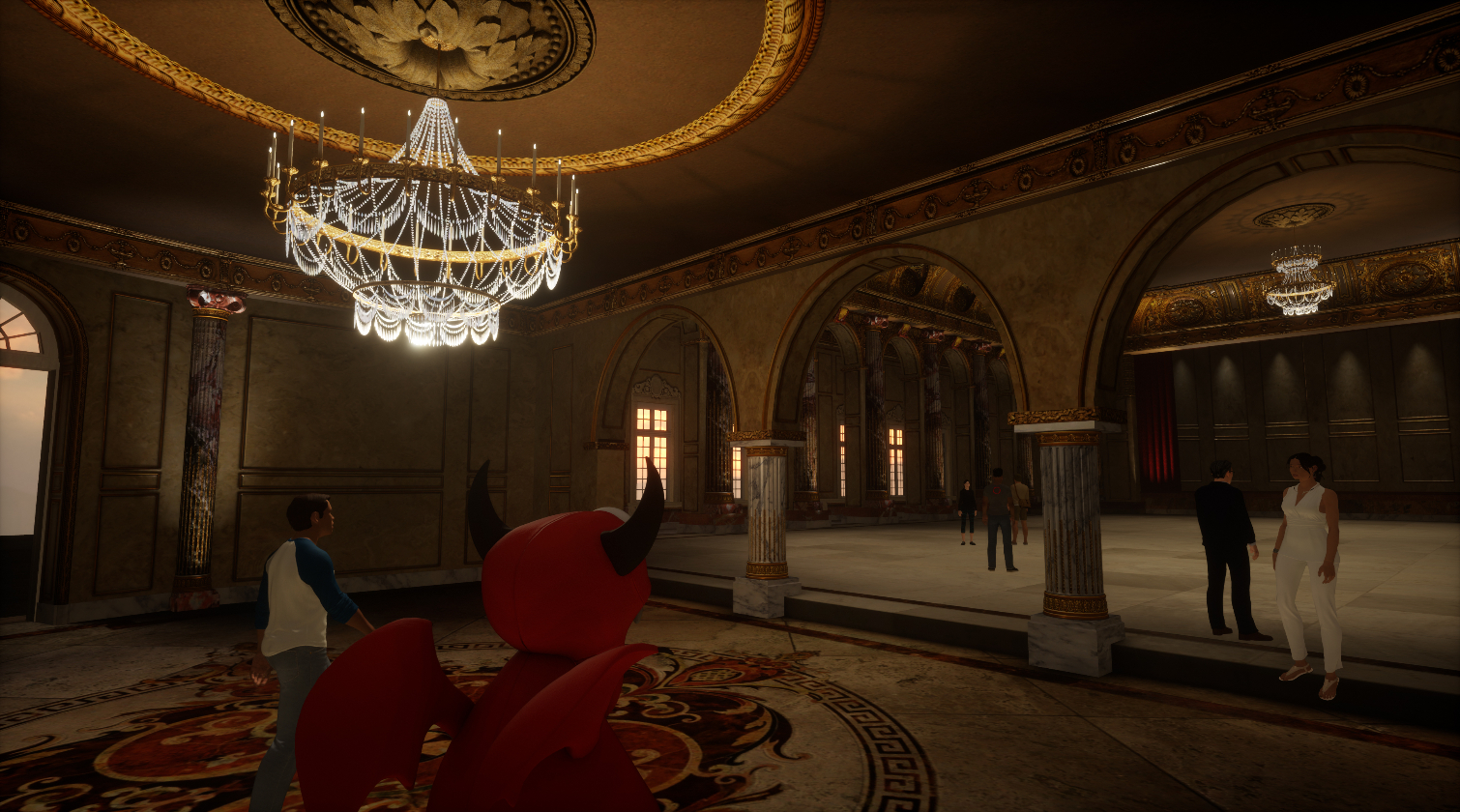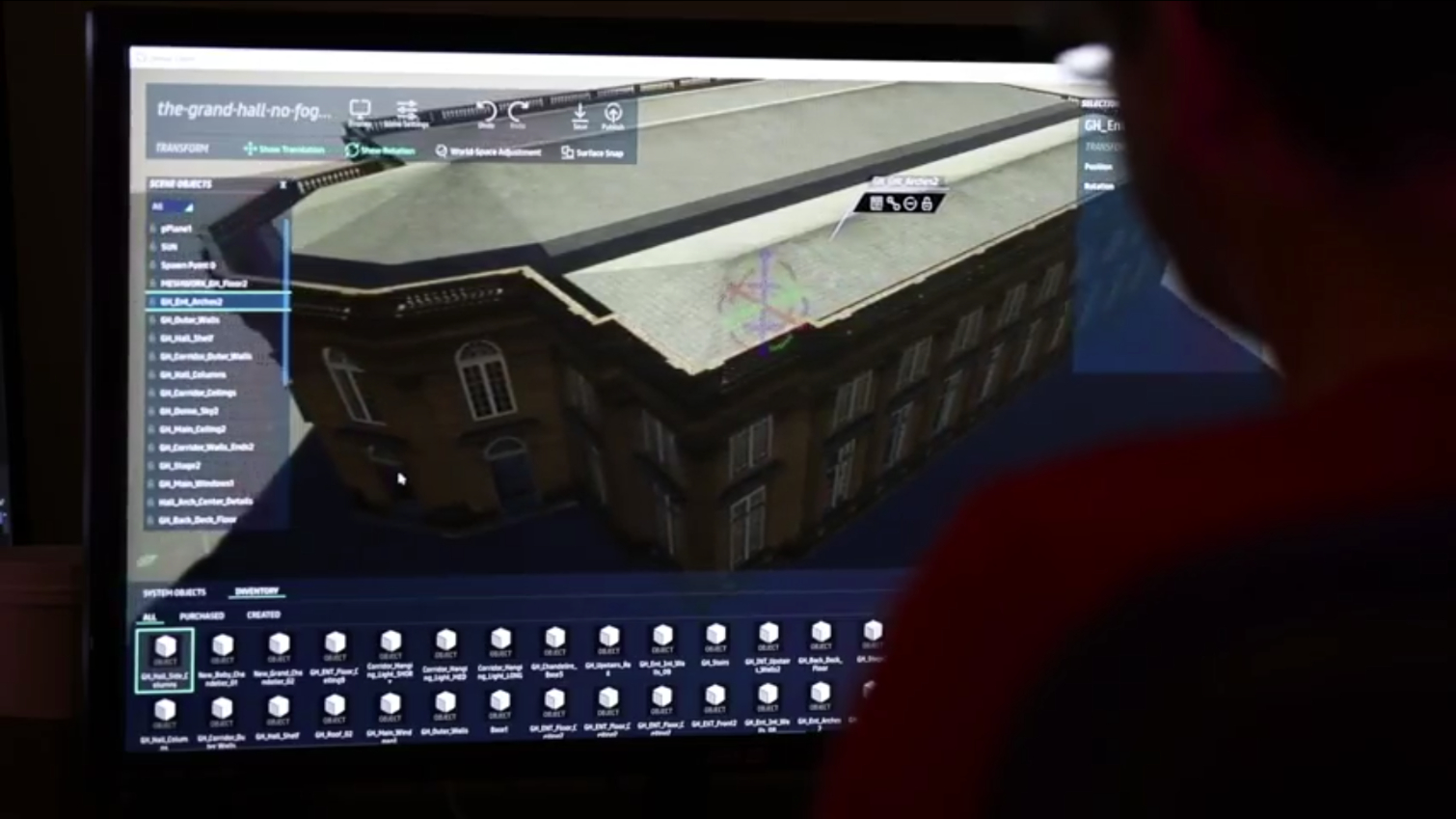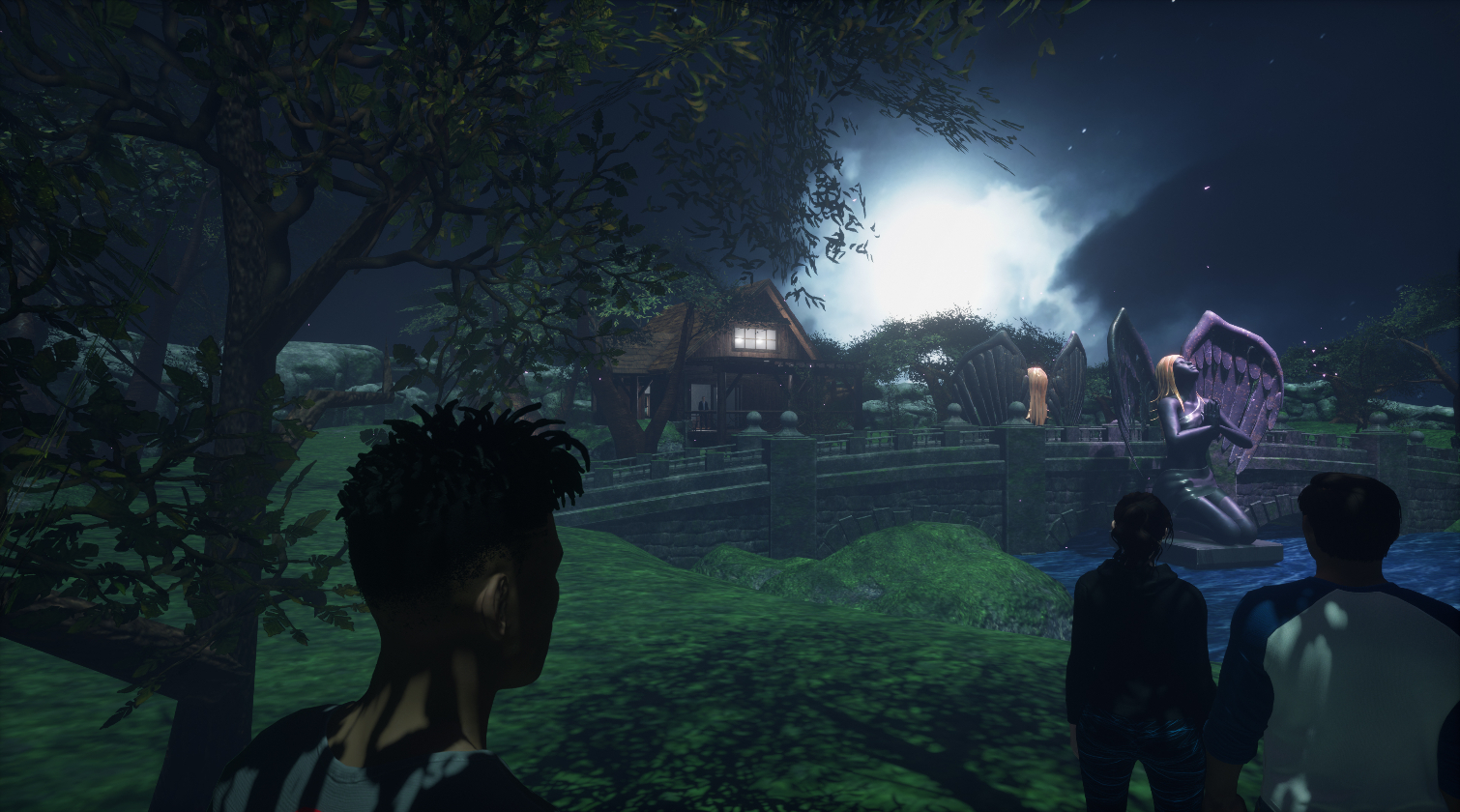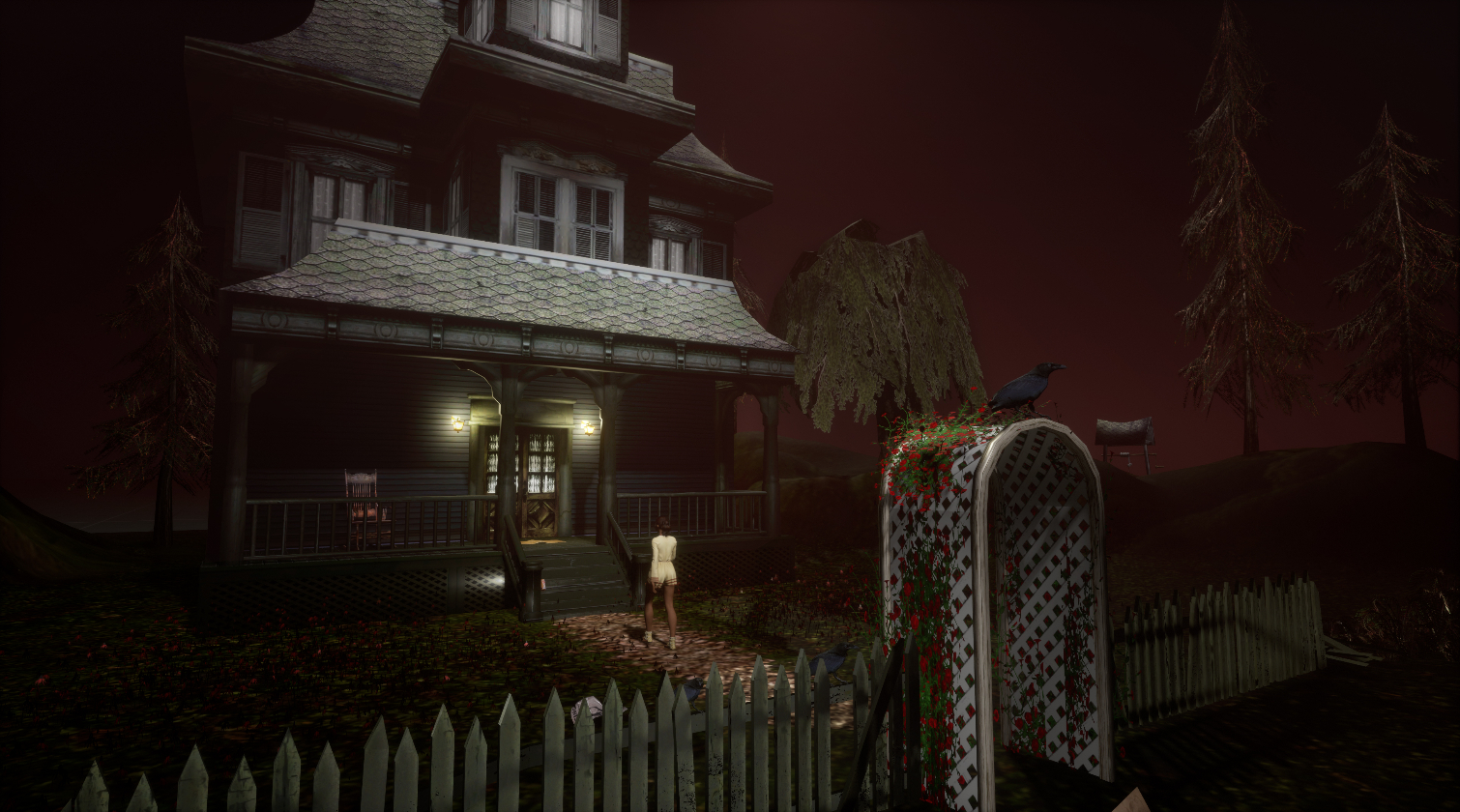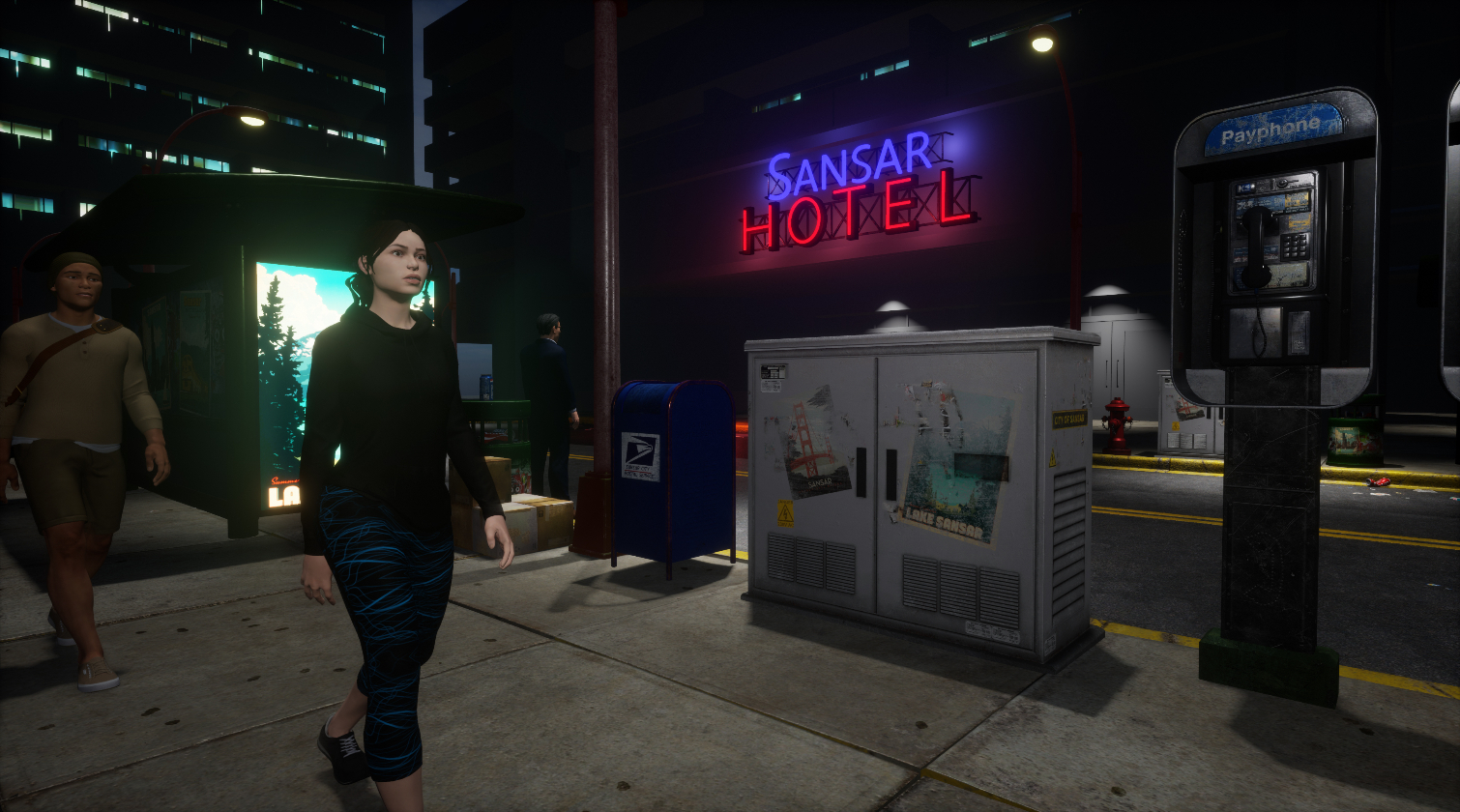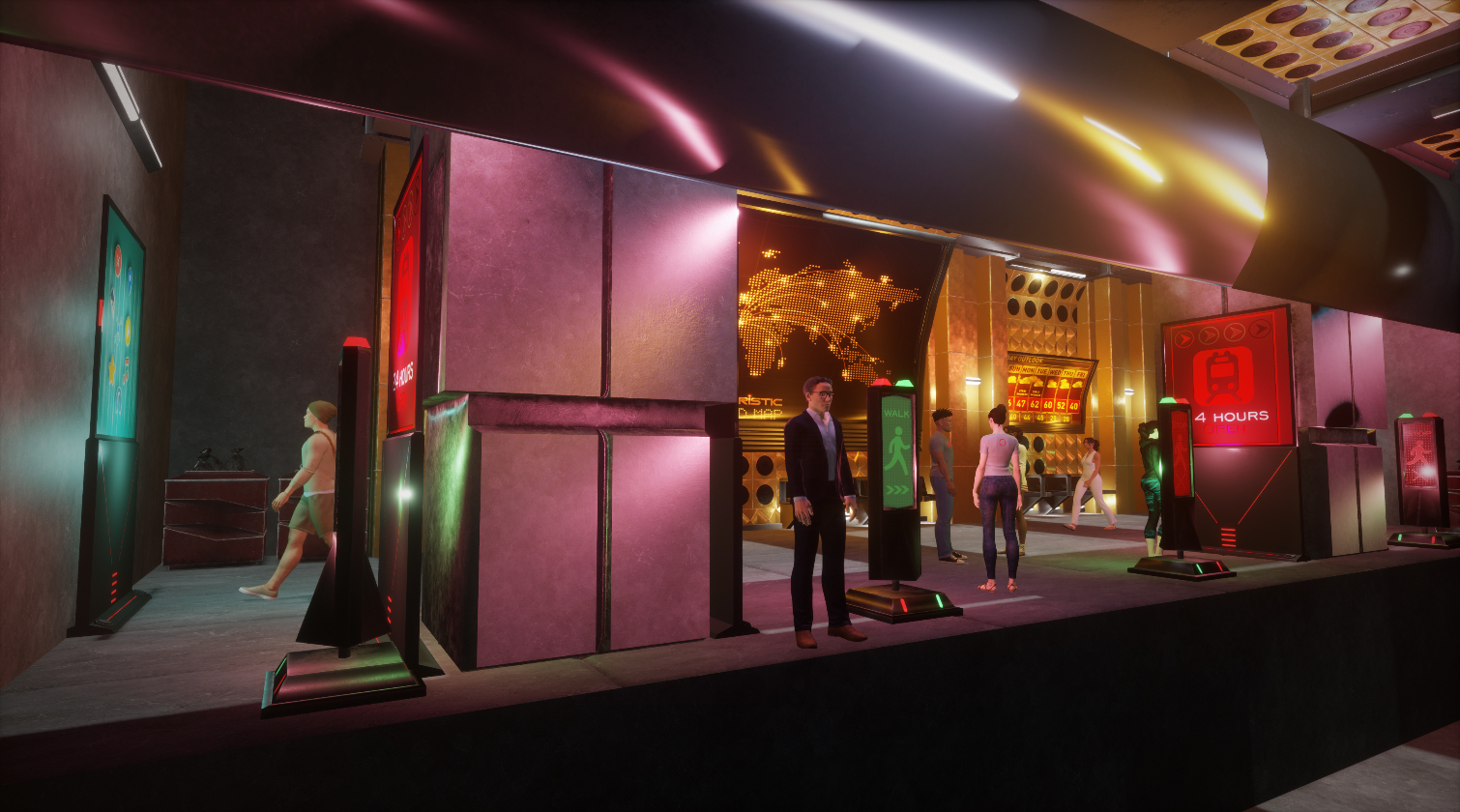Linden Lab Introduces Sansar Monetization System, Reveals First Video Footage
Linden Lab launched a critical component of Sansar, the company’s upcoming virtual reality experience platform, as it prepares for the public release later this year. The company also released the first public video footage of a Sansar experience.
Sansar is the modern successor to Linden Lab’s wildly successful online experience, Second Life. It provides a platform for anyone to build compelling VR experiences, and for talented 3D artists to profit from their creations.
Linden Lab first announced Sansar over the summer of 2015. We caught wind of the project in September, and were fortunate enough to speak with Linden Lab’s CEO, Ebbe Altberg, and the company’s Senior Director of Global Communications, Peter Gray. The two executives took the time to answer our questions and explain the scope of the project, but Sansar (called "Project Sansar" at the time) was still just a mere concept.
In February 2016, Linden Lab revealed the first screenshots of environments created with Sansar’s toolset. The screenshots gave us a glimpse at the level of graphics fidelity we could expect from Sansar experiences, but the company wasn’t willing to discuss the tool's development. The following April, Linden Lab announced the Creator Program, which gave a limited number of developers early access to Sansar’s creation tools. The company started sending out Creator Program invites to select developers in September, and over 500 creators are currently involved in the early access program.
Linden Lab is building Sansar to be as accessible for VR creators as WordPress is to bloggers. The company also wants to provide economic opportunity for its community members in the same way that Second Life does today. Users selling content on the platform is a key component to its success. Not only does it provide a means for people to earn money selling virtual items, but it also removes most of the effort involved in creating virtual environments. With a marketplace rich with a wide variety of items to select, the average user can create the experiences they desire with minimal effort. And those who have the ability to create things benefit from sharing their creations.
Until now, Linden Lab’s focus was on creating the tools necessary to build 3D objects and virtual experiences for Sansar, but now the company is finally ready to roll out its monetization platform. Linden Lab is planning to release Sansar later this year, and it wants the Sansar economy running tickety-boo long before the doors are opened to the general public.
Linden Lab introduced the Sansar Dollar today, which developers in the Creator Preview can now purchase. Creators can list their virtual items on the Sansar marketplace and accept Sansar dollars as payment, which can later be converted into real money.
Get Tom's Hardware's best news and in-depth reviews, straight to your inbox.
Tom's Hardware interviewed Ebbe Altberg and Peter Gray about the company’s upcoming VR experience platform.
Tom's Hardware: So, what can you tell us about the newly implemented monetization system within Sansar?
Ebbe Altberg: We basically have built a marketplace where our users can buy and sell content to each other. It’s a very important step in the journey of Sansar to make creators understand that not only can they create on the platform, they can also make money on the platform. It creates a whole other different motivation, and that's been a critical piece of Second Life success over all these years. In the last year (2015) and as well as this year (2016), creators in Second Life have cashed out roughly $60 million per year in earnings from creating content and running businesses on the platform.
We're now in the—roughly 500, maybe 600, invited creators on the platform, and over 10,000 people have signed up for the waiting list. As we continue to mature the platform and improve it, and release new updates to make it more feature rich and better, we continue to add more creators so we can get even more feedback and see even more awesome content that they create on the platform. And we will continue to do this throughout the first quarter of [2017].
We'll continue to release roughly every month with great updates and continue to add more and more users until we're confident that it's ready for the world at large and completely open the doors. And the monetization piece is just a very critical component of that. It’s something very unique to Linden Lab--or in the industry—to not only offer tools, but also offer the ability for creators to make a living on the platform.
Peter Gray: We want to empower people to create their own social VR experiences, share those with others, reach their audience, and also profit from them--build businesses like we've seen happen over the past thirteen years and in Second Life. And so, in this creator preview period, we're very focused on our creator community. They’ve been able to create the experiences, been able to share them with one another, and publish them to our cloud and go and experience them together. […] But now with this new step, they're also able to start buying and selling their creations with one another. And so, it’s the start of that sort of economic engine that’s getting warmed up in this creator preview period, and ultimately it will expand. Today they're able to buy and sell items—pieces of content, but ultimately, creators will be able to monetize entire experience.
TH: So, you’ve opened the monetization platform for the 500+ invited creators to sell amongst each other to work out the kinks of the system?
EA: Yeah, that's fair. I mean, part of it is for us to make sure that the marketplace and the user experience for buying and selling content is working great. And the whole exchange where people can buy Sansar dollars and spend Sansar dollars and then also redeem back to FIAT currency, and that all that works. But it also enables creators to start monetizing their work. You often find that creators become quite specialized, kind of like creators are in the physical world.
I mean, you have a few manufacturers who might create a gazillion different things, but you often find that they either make cars, or bicycles, or furniture, or whatever. And you see the same thing in the virtual world; that people end up being experts at creating trees, and shrubbery, and furniture, and houses, or vehicles. And so, as [creators] start to specialize, you find that as people want to assemble creations or experiences, that they don't want to build everything themselves. They start to acquire assets that other people have made. It actually ends up reducing friction for people to create interesting experiences when they don't have to create all the original content by themselves.
TH: So, you’re running the private creator preview for Sansar for the next quarter or so?
EA: Yeah. We’re trying to be data driven in the process as opposed to date driven. I wouldn't say we have all kinds of luxuries and that we’re taking our sweet time, but we want to make sure that it's incredibly great by the time any user can get access.
We’re sort of choosing the types of creators we onboard based on their level of experience and also what they're attempting to do, so that they have a high chance of being successful [...] with the skills [they have] and what they're trying to accomplish.
Right now, we're just so focused on making sure that we get the features that the creators need to be successful implemented. And they can already create amazing things...for example, this last release just started to expose our scripting framework so that people can start creating interactivity. A lot will happen in that area over the coming months, with more and more APIs in our platform so that they can do more and more interactive, interesting games, or classrooms, or whatever it might be they want to build.
TH: How do Sansar Dollars work? Is there some sort of conversion rate where you buy a Sansar Dollar for X number of [real] dollars? I’m assuming that’s where Linden Lab is getting its cut. Or, do you take a cut from the sales of creators?
EA: The business model is still being tweaked, but in broad strokes, yes. It's an exchange where someone can convert FIAT currency to the Sansars. We’re hosting the exchange, but the exchange is between users. So, users buy and sell Sansars between themselves. We're not the central bank in that sense; we’re basically just facilitating the exchange between users.
The value of the Sansar ultimately would be set by supply and demand of the market, and there's some things we can do like at the Fed, if you will, to sort of manage that a little bit, but in general it's just between users. And then yes, once you've accumulated Sansar dollars, you can, whenever you want, convert them back into FIAT by selling your Sansars on the exchange. Sansar will take a cut of the transactions, and there will also be some fees associated with the exchange or the conversion back out to FIAT.
In general, Second Life, we collect very very little, you could almost say the zero, on the exchange and on the transactions. We mostly are actually charging people hosting fees for having access to simulators for Second Life. One thing we've decided with Sansar is that we want hosting fees to be much lower so that it's much cheaper for people to own experiences and to create experiences. And then, instead, for us to capture a bit more when it comes to the G.D.P.
So think of Second Life as having a fairly high property tax and an almost non-existent consumption tax, which makes for a bit of a lopsided way that we collect fees. Sansar will distribute that a little more evenly with a lower property tax (hosting fee) and bring up a consumption tax so that we can spread the cost amongst the different types the users more evenly.
PG: It goes back to what I was trying to say earlier. Our vision with Sansar is we are squarely focused on creators, and we want to put them in a situation where they're able to become successful. We don't get in the way or put roadblocks to that success by making it too expensive up front, or too difficult, or too hard for them to reach an audience.
TH: So, how much does a Sansar Dollar cost?
EA: It’s going to be set by the market. There is no set conversion rate. We basically need to get to a critical mass of exchanges where the users ultimately determines the value through the buying and selling on the exchange.
TH: How do early creators get their hands on Sansar Dollars in order to start buying items in the market?
EA: Day one, they would have to buy them from us. We have not yet set a price for what that initial infusion of these dollars will be, but ultimately we will sell them at market price. How we choose to set that prices is still in testing--we haven’t decided yet--but I think we're choosing roughly one hundred to one as a starting point.
TH: So one penny per Sansar Dollar?
PG: Roughly, yes. So, for one U.S. dollar, you would get one hundred Sansar Dollars at the initial rate, and again, we're still in a limited preview period.
TH: Correct me if I’m wrong, but this initial injection of Sansar Dollars into the market during a limited developer preview would set those invited developers up to profit, somewhat like initial investors in a company that launches an IPO. Do you think some of these developers will profit from early market fluctuation?
PG: I mean, you might have speculators, I don't know. This is an interesting point.
EA: Actually, we’ve been starting with a limit on how much you can buy in the first place right now. So there's no one going to suddenly go and buy $10 million worth of Sansars and speculate on the Sansar exchange rate over time. We’re putting a fairly low cap on, because at this point we just want users to just utilize the system until we start to reach a point of having enough users that the friction has been removed. Then that's when we will quickly try to make sure that we get to a stable point as fast as we can. I think the stability is more important than the actual exchange rate, because it’s the stability that creates comfort amongst the creators that the money they make is going to be worth the same tomorrow as it is today.
Part of the success of Second Life has been our ability to have enough volume and monetary policy to ensure a very, very stable exchange rate over many, many years with minimal inflation or deflation that spooks the market when it comes to doing business on the platform. But you know, it's something that is obviously easier just to maintain it once you get up to a certain amount of volume. But getting to a stable point fast is quite a tricky part, and that's where we have a lot more experience than most, which we’re going to leverage to the best of our abilities.
We want to make sure that we sell in at the appropriate rate to maintain as stable of an exchange rate as possible so that you don't get suddenly a lack of supply and suddenly you get a massive spike in the exchange rate. Our focus will be managing stability, and it’s actually easier in a growing market, because we can always sell in. It actually becomes a trickier problem in a shrinking market. But that's a whole other conversation.
TH: When can the public expect to start seeing more to explain what they’re in for with Sansar?
EA: You will definitely start to see more, whether it's screenshots, or videos, and more refined description of what the platform has to offer. The first video, [which is available today], highlights one of the creators on the platform and his perspective on the platform, and with some more visuals of what he's been able to achieve on the platform. And we will do more and more of that, but we're very creator focused. We are focusing on what this platform and this toolset means to creators: what they can create and how they can do that and the value proposition around that.
We’re going to be less focused on it from a consumer's point of view because that is really up to the creator to create something that's of interest to the consumer. At some point down the road, we will start talking about those [creations] and how that is relevant to consumers.
TH: So, you’re taking the opposite approach to YouTube, which focused on opening a platform up to consumers and then focusing on bringing quality creators to the platform later? You’re focused on attracting creators first and consumers later?
EA: Yeah, I think that's fair. I mean, you have a spectrum. Imagine WordPress on one end and YouTube on the other. They're both platforms for creators. If you go to WordPress.com, it doesn't really have a consumer proposition at all. It's really just like, “What kind of website do you want to make?” I don't go there to find websites to go read or engage with. Whereas YouTube, the surface area is 99% consumer, and this little entry point for someone to upload a video to also become a creator.
Part of that is the complexity of the platform itself. Like on YouTube; it takes very very little effort to become a creator. Whereas WordPress or something like Sansar, it does take a bit more sophistication in creating something that it's successful.
So that's where we want to focus our energies, and there is just a huge gap in the market for tools and platforms that allow people to express themselves in this medium. Today, if you want to create something like what we're imagining, you would have to go license a gaming engine like Unity or Unreal and then hire a bunch of engineers to build server side functionality, multiplayer functionality, monetization functionality, user management functionality. You name it. For everything that is outside of the 3D capabilities of Unity, you have to go build a ton of stuff.
So if you want to create a multiplayer user experience that you can do in Sansar in minutes, we're talking months and millions of dollars to build just one of those. And so, that's what we're focusing on: making sure that we properly democratize the creation of this in the medium.
Over time, we will have a slew of incredible experiences for education; for gaming; for health; for socializing; for brands; for you name it. And then we will decide how to expose that to a larger audience as those things come about.
TH: I remember the first time I talked to you, you mentioned something about building a private island for you and your friends. That’s such an interesting idea, to have not even a public facing space.
EA: We see a future where most, and hopefully someday all of us, want to own virtual experiences like we own or rent physical experiences. I mean, you have your home, you have your office, you have your school, you have your pub, and you have your park. Now we can own those in the virtual world, not just in the physical world.
Therefore, how easy can we make it for us normal people that don't know how to do 3D construction? In the physical world, very few of us construct anything 3D at all, ever. We purchase all of it. I mean, my home has maybe a couple of things my kids made in shop, and you know, a picture or two that I took, and some fabric art that my wife made. But 99% is purchased, or inherited, or found, and then just assembled by being laid out throughout our home. And it’s the same with the office here. We didn't make these tables and lamps and chairs. We purchased them and then we just laid them out.
And sometimes we also interact with the environment. Sometimes in a fun way, like a bowling alley, and sometimes in a very lightweight way: In the office here, I interact very little with the environment. I might turn the lights on and scribble on a whiteboard, but most of the time I just move about and talk to people. And, that's kind of what I do at my house. I may turn my TV on or off, or some music on or off, or the lights on or off. Otherwise, most of my time is spent just hanging out and talking to people.
If we can make [virtual property] super easy to acquire and customize so that you feel that this is your place and you have full control over who has access to the place for whatever purpose it had, then I think it could be an extremely big idea.
A Little Preview
We still have a bit of a wait before we can truly evaluate what Sansar has to offer. In the meantime, Linden Lab finally revealed the first video footage of a project Sansar experience in the making. If the visuals from Loz Hyde’s Grand Hall experience are any indication, it would appear we’re in for truly vivid graphical experiences from Sansar creators.
Kevin Carbotte is a contributing writer for Tom's Hardware who primarily covers VR and AR hardware. He has been writing for us for more than four years.
-
AuxAux You are kidding Alex, but indeed you can create your own game inside these kind of platforms, with your rules and classes and whatever if you want, and let people roleplay together. Or a museum can create a virtual experience to show you a reconstruction of some ancient place. Maybe one day you will go to vacancy and you would give a look at some hotel rooms in VR, before you choose where to go. And you can create that without needing to setup the engine and the network infrastructure, as that's provided by the platform already.Reply -
Supporter Last time i've used any linden lab product, i ended up flying through an invisible wall into someone's private lot where an orgy was in progress.. and only realize it after physical parameters of the wall lot have rezz behind you and you have no where to go but to apologize for trespassing and teleporting out using a global map ASAP or get the ban hammer only end up behind a banned barrier.Reply
